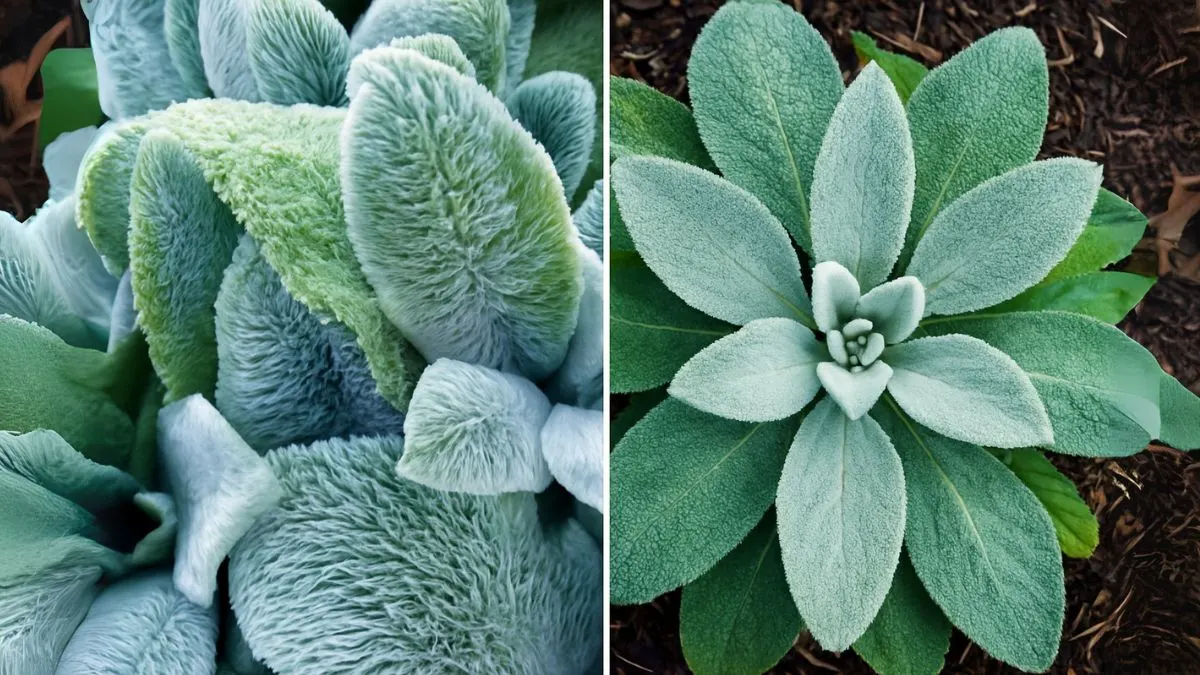When it comes to medicinal and ornamental plants, few are as fascinating as Stachys, commonly known as Lamb’s Ear. Its soft, fuzzy leaves aren’t just a treat to touch—they’ve historically been used as a natural bandage, thanks to their antibacterial and absorbent properties. Beyond its healing history, this plant also adds a silvery charm to gardens while requiring very little effort.
If you’re a gardener who loves low-maintenance plants that doesn’t need much of your attention to thrive and flourish, the Stachys plant deserves a spot in your backyard or container collection.
Why Choose Stachys (Lamb’s Ear)?

- Works as a natural bandage, reducing reliance on synthetic products.
- Adds year-round texture and contrast with its silvery foliage.
- Extremely hardy—it grows well in poor soil conditions where many plants fail.
- Perfect for beginner gardeners because it doesn’t need much of your attention to thrive and flourish.
Planting Stachys from Seeds
One of the easiest ways to start your journey is with seeds. Here’s how:
- Place seeds on moist seed starting mix. Don’t bury them too deeply—light is essential for germination.
- Keep the tray in a warm, sunny spot with indirect light.
- Mist the soil regularly to maintain moisture without waterlogging.
I tried sowing mine in early spring on my balcony using a simple tray, and within weeks, tiny fuzzy leaves appeared—proof that Stachys is both forgiving and rewarding.
Also Read: Why Most Echeverias Die Prematurely
Soil and Location Requirements
If you’re wondering about soil quality, here’s the surprising truth: Lamb’s Ear is an easy, fast spreader. They look best in lean soils, so should not be fertilized. In fact, over-fertilizing can lead to leggy growth and fewer of those signature velvety leaves.
- Stachys byzantina prefers well-draining soil, ideally a loamy mix.
- Sandy or rocky soils are also acceptable since the plant grows well in poor soil conditions.
- For maximum growth, pick a sunny to partially shaded spot in your garden.
Container Gardening with Stachys
If you live in colder climates like Canada or the northern USA, you may prefer to grow Stachys in containers. Use a wide but shallow pot with drainage holes. Pairing it with succulents or other drought-tolerant plants creates a visually stunning container display. Container-grown Stachys also allows you to move it indoors when temperatures dip below freezing. I once grew mine in a terracotta container, and not only did it survive the harsh winter—it bounced back lush and vibrant in spring.
Watering and Maintenance
Stachys is a plant that thrives on neglect.
- Water lightly; too much water can rot the roots.
- Once established, it is drought-tolerant.
- Trim old or wilted leaves to keep the plant looking fresh.
Remember: this plant doesn’t need much of your attention to thrive and flourish—making it perfect for busy gardeners.
Quick Care Guide for Stachys (Lamb’s Ear)
Care Aspect |
Requirement |
Notes |
Soil |
Stachys byzantina prefers well-draining soil, ideally a loamy mix |
Avoid rich or heavily fertilized soil |
Planting |
Place seeds on moist seed starting mix |
Keep lightly covered, not buried |
Growth Habits |
Lamb’s ear is an easy, fast spreader |
Needs space to expand |
Soil Conditions |
Grows well in poor soil conditions |
Perfect for neglected spots |
Fertilizing |
They look best in lean soils, so should not be fertilized |
Minimal care needed |
Benefits Beyond the Garden
The most fascinating feature of this plant is its traditional use. For centuries, its leaves were applied to cuts and wounds as a natural bandage. The texture helps absorb fluids, while compounds in the leaves are thought to have mild antibacterial properties. Aside from its healing uses, it also makes a fantastic ground cover. Its silvery leaves contrast beautifully with bright flowers like lavender or marigolds.
Also Read: Why Horsetails Are the Perfect Plant for Wet Areas, Fences & Backyard Screens
Personal Experience with Stachys
When I first planted Stachys, I was skeptical about its toughness. To test it, I placed one in the poorest patch of soil in my garden, an area where even marigolds struggled. To my surprise, it thrived. Not only did it spread quickly, but it also created a soft carpet of leaves that my kids loved to touch.
I even experimented by using a freshly washed leaf on a small scrape—it worked just like a natural bandage, soothing and protective. That’s when I truly understood why this plant has been cherished for generations.
Conclusion
If you’re looking for a plant that blends ornamental beauty with practical benefits, Stachys—or Lamb’s Ear—is the perfect choice. From its velvety silver leaves to its reputation as a natural bandage, this plant is a gift that keeps on giving. Whether you’re in Canada, the USA, or anywhere else in the world, this low-maintenance perennial deserves a place in your garden.
👉 Ready to add Lamb’s Ear to your collection? Plant it today, and enjoy both its natural beauty and healing history!






